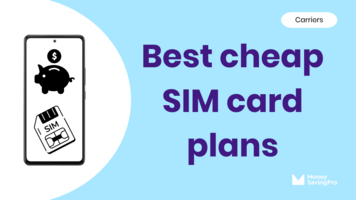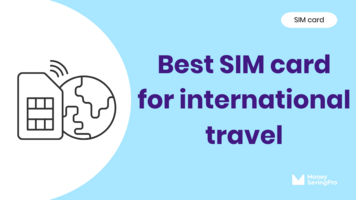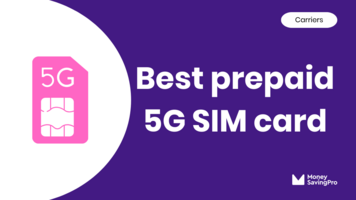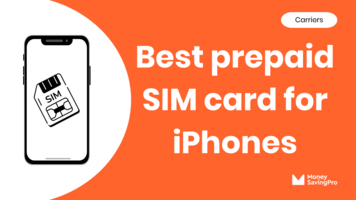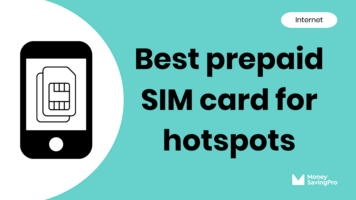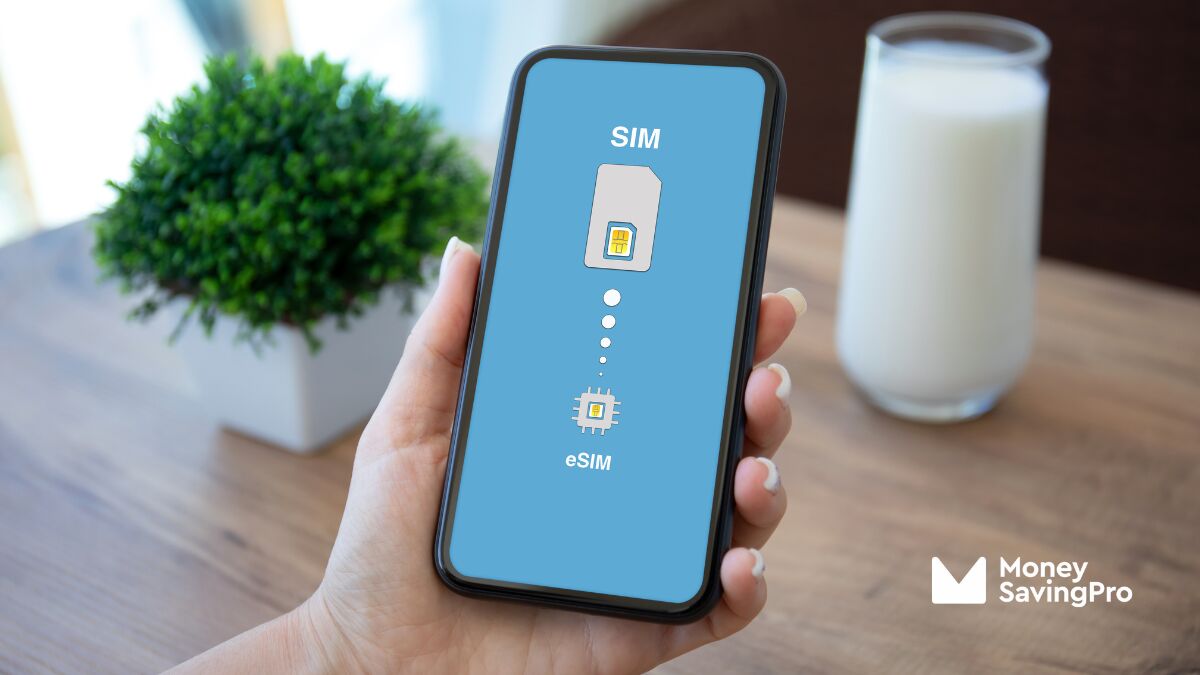
Have you heard the term dual SIM and wondered what it is and exactly how it works? Dual SIM smartphones have become pretty standard in recent years, especially with the uptake of eSIMs.
Imagine having two phone numbers but not needing to lug around two phones to keep them active. That's the beauty of a dual SIM phone-it holds two SIM cards in a single device.
I recently got to play around with a dual SIM phone, so I'll be sharing how it works, the pros and cons, and I'll even give you a quick rundown on eSIMs, which are like the next level of SIM cards. Plus, I'll cover how you can even save some cash on your phone bill each month.
By the time you finish reading, you'll know enough to figure out if dual SIM is the game-changer you've been waiting for when it comes to managing your mobile life.
What is dual SIM?
A dual SIM phone is a device that allows you to use two SIM cards simultaneously. So, instead of carrying two separate phones for different numbers or plans, you can have both in one device.
This can be incredibly useful, especially for those who want to maintain a personal phone number and work number on the same phone or take advantage of two different carrier plans.
How does dual SIM work?
Dual SIM devices work like two separate phones on one device. Here's a quick rundown of the types:
- Physical dual SIM: Your dual SIM smartphone may come with two physical SIM card slots, which allow you to insert two physical SIM cards from different carriers. You can actively use either SIM for phone calls, texts, and data and switch between them as needed.
- Hybrid SIM slot: Some phones offer a hybrid SIM tray, where you can either use two physical SIM cards or one physical SIM card and an eSIM. This adds an extra layer of flexibility.
- eSIM: An eSIM (embedded SIM) is a digital SIM card built into your phone's hardware. With eSIM-compatible devices, you can add multiple virtual SIM profiles and switch between them without the need for a physical SIM card. This is particularly handy for travelers who want to switch to a local SIM card carrier without swapping cards.
Understanding dual SIM modes
Dual SIM phones offer various modes to manage how your two SIM cards operate. These modes allow you to tailor your phone's behavior to suit your needs. Here are the most common dual SIM modes:
- Dual SIM Dual Standby (DSDS): Most common mode. Both SIM cards are active simultaneously, allowing you to receive calls and texts on both phone numbers. However, when you're on a call or using one SIM for data, the other SIM may become temporarily inactive.
- Dual SIM Dual Active (DSDA): Both active SIM cards are always fully operational. Make or receive calls and texts on both numbers simultaneously. This is particularly useful if you need to use both phone numbers actively.
- Dual SIM Switch: Manually switch between SIM cards for phone calls, texts, and data. You need to select which SIM to use before making a call or sending a text. While this mode offers complete control, it can be less convenient for those who need constant access to both numbers.
- Automatic SIM Selection: Most dual SIM smartphones allow you to set preferences for which SIM card to use by default for different functions. For example, you can choose one SIM as the default for voice calls and the other for data. This way, your phone automatically selects the appropriate SIM based on the task at hand.
- Data Priority: You can prioritize data usage if you have two SIM cards with different data plans. For instance, you can specify that SIM 1 should be used for data by default, but if it's not available, your phone will switch to SIM 2 for data.
- Call Forwarding: Some dual SIM phones offer the option to forward calls from one SIM to the other when it's unavailable or busy. This ensures you never miss important calls.
Understanding these different SIM modes and how to configure them will help you maximize the benefits of your dual SIM smartphone.
Benefits of dual SIM phones
- Cost savings: Using two SIM cards lets you take advantage of different carrier plans, offers, or discounts.
- Convenience: No more carrying two phones! You can manage multiple phone numbers on a single device, reducing the hassle of juggling multiple phones.
- Travel-friendly: For globetrotters, having a dual SIM or eSIM allows you to switch to a local carrier in different countries, avoiding hefty roaming charges.
Disadvantages of dual SIM phones
- Battery drain: Using two SIM cards simultaneously can put extra strain on your phone's battery, reducing overall battery life.
- Limited compatibility: Not all phones support dual SIM functionality, and the available features may vary. Check if your phone is dual SIM compatible before purchasing one.
- Complexity: Managing two numbers can become confusing, and it might be easy to send a message or make a call from the wrong number inadvertently.
What is an eSIM?
Most newer phones use eSIM technology for at least one of the dual SIM options. An eSIM, or embedded SIM, is a digital SIM card built into your device.
Instead of physically swapping out a prepaid SIM card, you can switch between different carrier profiles with a few taps on your phone.
eSIM plans are especially useful for those who travel frequently and want the convenience of switching carriers without the hassle of acquiring a physical SIM card.
How do I know if I have a dual SIM phone?
Here's how you can check:
- Check your settings: The easiest way is to look for the "SIM cards" or "Network & Internet" section in your settings. You may see options related to SIM card management. If you find a section that mentions dual SIM or SIM card configuration, your phone likely supports this functionality.
- Consult your phone's manual: If you still have the user manual that came with your phone, check it for information on dual SIM capabilities. It should provide details on whether your device can accommodate two SIM cards.
- Search online: A quick internet search for your phone model's specifications can provide clarity. Websites like the manufacturer's official website often list the features and capabilities of various phone models.
Dual SIM FAQs
Yes, that's part of the beauty of this feature. You can use two different carriers, allowing you to take advantage of other plans and coverage.
Most dual SIM phones provide an easy way to switch between SIM cards through the settings menu or a quick-access menu in the notification bar.
eSIM support varies by carrier, so it's essential to check with your carrier to see if they offer eSIM services and if your phone is compatible.
Recap
One phone, but two different SIM cards. We're talking either two physical SIMs, a mix of one and an eSIM, or even two eSIMs.
This isn't just a flashy gimmick-it can actually save you some money. Having a dual SIM phone means more convenience and flexibility, which can really make a dent in your monthly bills.
But there are some downsides, like your battery may take a hit, or you may run into compatibility issues. So, if you're thinking about going the dual SIM route, make sure to check the pros and cons first.
